|
There are some articles related to the No Kill movement, particularly related to the phrase “No Kill,” which seem to be perpetual. They are shared, reshared and shared again years after the fact. A local contact of mine for whom I have a great deal of respect shared an article from 2021 recently which takes issue with the phrase “No Kill,” makes claims about open admission v. limited admission shelters and which endorses a sheltering philosophy called Socially Conscious Sheltering about which I have blogged before. I asked my contact for the opportunity to speak with her about the article and about SCS and have reached out to her so we can have that conversation. Much of the opposition to No Kill philosophies is founded on false information. It is not possible to respond to every article written in opposition to No Kill philosophies, but there are times when No Kill advocates need to speak out and be clear in an effort to educate the public. That is the purpose of this blog. The article shared by my contact is entitled, “Language Matters: The False Dichotomy of Kill/No Kill.” It was published on May 7, 2021, by Dr. Jennifer Woolf on a platform called VetzInsight. I’ll address just few things that caught my attention which I feel are most important. [The phrase “No Kill is] divisive and unnecessary. I disagree. To me, the phrase “No Kill” is informative. As Dr. Woolf notes in her article, language matters which means words matter. Shelters must use words the same way as they are used by the public. If I seek the help of my veterinarian to end the life of my geriatric dog to alleviate suffering, that is euthanasia. We do not say I killed my dog. If my healthy and treatable dog ends up in an animal shelter and his life is ended, that was not done for reasons of mercy. We cannot possibly say my dog was euthanized. My dog was killed. No Kill means that we don’t end the lives of healthy and treatable animals and that we use the word euthanasia according to the definition. When we call the deaths of healthy and treatable animals euthanasia, we undermine not only the value of those lives but of the lives of animals who were euthanized as an act of mercy and love. When we refer to a shelter as a No Kill shelter, that means the shelter does not end the lives of healthy and treatable animals. I am fully aware there are some shelters that claim No Kill status to garner public favor when they are not No Kill facilities. It is up to all of us to call out that co-option of the phrase "No Kill" when it happens. When people say the phrase “No Kill” is divisive, they are focusing more on the phrase than they are focused on the lives of animals. I fully promote use of the phrase No Kill because it is already on the public radar and it is not difficult to understand. Shelters are not “kill” and “no-kill." They are “open admission” and “limited admission." Shelters are kill and No Kill. If a shelter ends the lives of healthy and treatable animals for space or convenience, it is a kill shelter. If a shelter saves the lives of all healthy and treatable animals, it is a No Kill shelter. The description of shelters as open admission and limited admission has been the subject of much debate in animal sheltering and welfare circles for ages. People behave as if there are only two options: 1) to intake all animals regardless of source or circumstance; or 2) to limit the intake of animals. Talk about a false dichotomy. Many people believe that municipal animal shelters are open admission related to intake not only of animals found running at large (for which the shelter has a public safety function) but also of owned animals. Absent some contract to the contrary, municipal shelters are not obligated to take owned animals and should only do so on a managed basis - which is the third option: managed admission. Christie Keith wrote a blog on this subject years ago that I have shared many times because it is still relevant today. I quoted part of her blog in my book with Christie’s permission: A shelter or animal control agency that responsibly manages its intake flow is still an open admission shelter. Shelters that fulfill the legal or contractual requirements of their municipality as to what animals they are required to admit, and that additionally have provisions for emergency intake for animals in immediate need, are open admission shelters. But some folks simplified [the phrase "No Kill" to mean] stop euthanizing any pets. I have heard the argument many times that people think “No Kill” means no animals die. It is an argument most often used by people who oppose No Kill philosophies, accusing those of us in the no kill movement of advocating for animal suffering. In almost two decades of animal advocacy, I have never met with or interacted with any person who really thinks that shelters keep suffering animals alive and that no animals are ever euthanized. Of course they are. While they are ordinarily only a very small portion of any animal shelter census, there will always be animals in shelters who are either suffering or are irremediably ill for which euthanasia is the only option. The No Kill movement is one of compassion. The notion that animals would be allowed to suffer needlessly is absurd. The Animal Evaluation Matrix to which I have linked here is an extremely helpful guide related to euthanasia decision by shelters. Many municipal shelters are open admission. This means they take in all unwanted animals including the sick, the old, and the dangerous. In many cases, it also means they legally cannot turn away any animal. I personally know of no municipal animal shelter that is required to take every owned animal right this very minute. Cities and counties just don’t function that way. All cities control the amount of property taken from citizens because there are costs associated with those functions. (I know people object to the description of pets as property, but there are some legal advantages to that at this time in our history particularly related the ability of a municipality to seize animals from their caregivers). The word “unwanted” is also not helpful. Just because an animal ends up in a shelter does not mean that happens because no one wants them. More often than not it is because they got loose from the people who do love them and want them. In cases where people seek to surrender their animals to shelters, there are certain some heartless people who do so and should never have had the animal in the first place. The vast majority of people who seek to surrender an animal do so in desperation due to the combination of some life crisis and their inability to see another solution in the moment. When we see animal problems for what they are - people problems - we can help many people keep their pets by providing them with resources to do that or providing them alternatives to surrendering their pet. With regard to animals found running at large, there are some who are dangerous. This is ordinarily a very small percentage of the dogs entering shelters who may have some cognitive issue which causes their behavior to be unpredictable or makes them a genuine danger to the public. This is not the same, however, as dogs who are labeled as aggressive due to behavior created by the shelter environment itself which often overstimulates dogs and in which the people running the shelter expect those dogs to behave the same way they would outside of the building. On the other hand, many private shelters are limited admission. I would go one step further and stay that ALL private shelters, meaning nonprofit shelters which operate on donations and grants using mostly volunteer labor, are limited admission and for good reason. If a shelter receives no funding through tax dollars, has limited capacity to house animals and limited resources to care for those animals, it makes perfect sense to limit admission to just those animals for which the shelter can adequately provide care in order to function responsibly. In order to honor this relationship between open-admission and limited-admission shelters, there is a new movement towards socially conscious sheltering. It eliminates the false dichotomy of kill/no-kill. It suggests that we're all in this together. I have written about Socially Conscious Sheltering before and I will not cover that subject again here in depth. The foundation of SCS is the Five Freedoms that were developed for livestock and while there is nothing wrong with the freedoms in general, the problem is when the lives of animals are ended because the shelter failed to adequately provide an animal with a particular “freedom.” We must also remember the freedoms do not include a freedom to live, absent which the other five freedoms mean nothing. The website for SCS has been updated since I first blogged about this approach four years ago. The website now includes a number of tenants which ultimately achieve nothing because they are the animal welfare version of a political speech. The words look good on a website. They sound good. How could someone possibly disagree with them? In the trenches of animal welfare advocacy where I spend my time, tenants and intentions don’t do much good to keep shelter animals alive. If that is our goal, the solution is known and has been for almost 20 years: the programs and services of the No Kill Equation which can be implemented by any shelter, municipal or nonprofit.
Language matters. Saving the lives of shelter animals matters more.
0 Comments
There's a saying that goes, "the more things change, the more they remain the same." This is especially true when it comes to opposition to animal shelter reform which doesn't seem to change much over the years. I wrote a blog in 2016 called The Burden of Change in which I talked about the arguments by opponents of No Kill animal sheltering that advocates must meet certain requirements in order to speak out about what is happening at tax-funded animal shelters. I shared the blog recently related to some advocates in Columbus, Georgia, who are trying to bring awareness to the animal shelter operation managed by the City of Columbus and opposition to that advocacy. I wrote the blog years ago and thought it worthwhile to touch on this subject again. People who advocate for reform of animal shelters are often told they cannot express their opinions unless they meet certain requirements. The typical push-back from shelter employees, shelter volunteers and some in the animal rescue community is that people have no right to criticize the shelter unless they:
Let's start with the obvious counter to the push-back. Everyone has a right to free speech under the First Amendment to our Constitution. Everyone. When it comes to operations funded by tax-dollars, those operations are inherently subject to public scrutiny and criticism, because the public is paying for those operations. The people employed in tax-funded animal shelters are public servants and are answerable to the public being served whether they like it or not. People complain about municipal functions funded by tax-dollars every day and think nothing of it. Road conditions, timing of traffic signals, response time of police and fire departments, conditions at public parks and venues, zoning regulations. We do not ask people to participate on a repaving crew before they are allowed to complain about a pothole in the road. We do not ask people to help mow at a city park before they are allowed to complain about broken equipment in the park. We do not ask people to help investigate crimes or help put out a fire using a garden hose before they are critical or a police or fire department. Animal shelters are the only tax-funded operations that rely so heavily on volunteers to perform tasks that would otherwise be performed by paid staff. Those volunteers are part of the No Kill Equation and are incredibly important to the well-being of the shelter animals. Volunteers also become the eyes and ears of the community as they interact with staff and the animals. But - news flash - being a volunteer is not a perquisite for free speech and having more volunteers is not a guarantee of a shelter's success. The No Kill Equation is 11 elements, and it is not just about people volunteering. Consider these examples. In one community, people are critical of the regressive animal shelter and are told they cannot have an opinion unless they volunteer. They do. They play with cats, walk dogs, clean kennels, do fundraisers and otherwise perform tasks that would be done by paid staff. They volunteer for months in an effort to help animals but are powerless to address systematic problems which cause the killing of healthy and treatable animals. They are told if they are openly critical of what they experience in the shelter, they will no longer be allowed to volunteer. In another community, people are critical of the regressive animal shelter and are told they cannot have an opinion unless they volunteer. They decide it would be more productive to educate themselves about No Kill philosophies and programs so that they can promote progressive sheltering with elected officials who oversee the shelter operation and educate the public about how their money is being spent in their name. This is what we did in Huntsville, Alabama. We were told we could not have an opinion unless we volunteered. We felt our time was better spent trying to resolve the systemic issues that led to the death in the first place. We were able to help bring about change through advocacy, something we never would have achieved through volunteering alone. There's another saying that says you're damned if you do and damned if you don't. I was criticized for years for not volunteering in the shelter. Once the shelter changed the culture and began saving more lives, I thought it was safe for me to volunteer so I did. I went to the shelter on my lunch break and walked dogs, I created short videos to help place dogs, I did fundraisers to help the shelter purchase supplies like slip leads and I encouraged other people to volunteer. It became immediately obvious to me that I was not welcome in the shelter by the staff and other volunteers due to my advocacy, but I continued volunteering anyway. It was about helping animals and not about me individually. I ultimately stopped volunteering when dogs I was trying to help were destroyed for "behavior" based on reasons that made no sense to me and after I received a nasty message from the volunteer coordinator. She criticized me for only walking what she called the highly adoptable dogs and told me I would "piss myself" if I interacted with the dogs she interacted with daily. I was tempted to respond that as an Army veteran, it takes a lot to cause me to lose control of my bladder but kept that to myself and walked away. I suspect that the city attorney would not have been happy with a volunteer claiming to be put in a dangerous position for the sake of a city department. My point is that I did not volunteer as a matter of principle. Then I did volunteer and even that was not enough to satisfy my critics which is no surprise at all. Nothing I could have done would have been enough for them so I choose to spend my time in other ways which I believe are actually productive. These include screening of city council candidates related to support of No Kill philosophies, data analysis, keeping the public informed of how their money is being spent, meetings with city officials and meetings with members of the city council to promote more shelter standards being codified to preserve the progress that has been made at the shelter and to keep the city from going back to a time when half the animals entering the building were destroyed. When people tell you that you have to do certain things before you have the right to free speech, that is a red flag. And while volunteers are incredibly important to animal shelters and are part of the No Kill Equation, volunteering alone does not reform a broken and antiquated model of animal sheltering. The burden of change is still not mine to carry and it is not the responsibility of people who have the audacity to speak out and ask for better use of tax dollars. You can stop telling us that if we would just be nicer or would just volunteer everything would change. No. Everything changes when those who are responsible for making life and death decisions regarding shelter animals choose life, take responsibility for what happens in their buildings and then invite the public they serve to be part of a new and better future. They can start by educating themselves about the No Kill Equation using this 27-minute video from the No Kill Advocacy Center called No Kill 101. While I do not require people who work in or volunteer in shelters to watch this video as a prerequisite to defending the killing of healthy and treatable animals in shelters, it makes perfect sense for them to use some of the time they would otherwise spend on social media defending the killing to instead educate themselves. In 2018, I was connected by a common contact with Ann Tiaz who was making a documentary film about the No Kill movement with a specific focus on events in San Francisco. Anne traveled to Alabama, and we met one afternoon to talk about her film and our advocacy in Huntsville, Alabama. It was Anne who first recommended I write a book about my experiences and those of my group to achieve animal shelter reform in Huntsville through political advocacy. Anne's film was not yet completed but I was amazed and thrilled she had arranged for Peter Coyote do the narration for the film. Wow. Just wow. I knew who Anne was talking about immediately. Peter Coyote is one of a handful of people on the planet whose voice is instantly recognizable. He is iconic. You know his voice even if you think you don't. He has appeared in dozens of films, has narrated even more (many of which are Ken Burns documentary films) and is both an author and illustrator. The Wikipedia page about him is lengthy and his website describes him as "a politically engaged person who has championed a multitude of causes. . .and a songwriter, guitarist, singer and Buddhist priest." I most recently watched him narrate the Ken Burns series The Dust Bowl. He is the narrator for the upcoming Burns series "The U.S. and the Holocaust" and will also narrate a 10-part documentary series about JFK being released in 2023. (images of Mr. Coyote courtesy of his website) I reached out to Mr. Coyote after Anne's visit to introduce myself and to thank him for agreeing to narrate her film. We exchanged emails in which he shared that he had adopted two dogs from a high kill shelter in Fresno, California, whom he described as now being "fabulous and happy." He read my book and tried to submit a review to Amazon. It was never published despite Peter complaining to Amazon about that. I tell myself it's because they didn't believe it was submitted by the Peter Coyote. I was just thrilled he had taken the time to read it. I was on Mr. Coyote's Facebook page recently and saw a spot he did in support of wolves in Montana for Footloose Montana, a subject about which he has been a staunch advocate (and about which my dad also felt strongly as a supporter of the California Wolf Center). Recent weeks have left me frustrated with my local No Kill efforts and I had been looking for a way to make a difference for others advocates. Seeing the spot for Footloose Montana got me wondering if he would consider doing a spot about the No Kill movement. I reached out to him to ask. I actually asked how much he would charge, knowing I could not afford to hire him but thinking it would be rude to assume he would help. He said yes and he said he would do it for free because it's a subject in which he believes. This short spot about the No Kill Equation and the No Kill movement is available for use by anyone who wants to use it. My hope is that by sharing about these subjects with the help of someone so recognizable and well-respected, more people may actually listen and may decide to learn about what is happening nationally to change our broken animal sheltering system. I still believe the No Kill Equation is the one method that works because it is so comprehensive and has worked in places where it has been fully implemented. You are free to link to the Youtube video. If you would like the video as a movie file, send me an email and I'll share it with you. As one person commented on a post on Mr. Coyote's Facebook page recently, hearing his voice is like a stamp of approval in what you are about to see and hear. I hope that is the case regarding my spot. Thank you, Mr. Coyote. It means so very much to me, to the people who may be educated on this subject and to the animals who may be saved because of one minute in time. The world is a much better place thanks to people like him who take the time to help people like me just because he feels it is the right thing to do.
Mr. Coyote does Dharma talks in which he introduces people to Buddhism and how it relates to our lives. At the end of each talk, he shares the following loving kindness meditation: May all beings be filled with loving kindness. May all beings be free from suffering. May all beings be happy and at peace. Yes, yes, yes. At the heart of the No Kill movement are the concepts of love and kindness. Perhaps a day will come when we stop ending the lives of healthy and treatable shelter animals needlessly and we can fulfill the meditation for us all. When I first heard about a book called "Catching Dawn" written by Melissa Armstrong, I was intrigued. I thought the book was just about one woman's mission to catch and help a free roaming dog named Night who belonged to no one and who had delivered puppies in a poor neighborhood in Springfield, Tennessee, a mission that lasted months. I quickly learned the book was about much more than rescuing a dog and her multiple litters of puppies. It is about saving ourselves and the people with whom we share our lives - families, friends and even foes. It may be hard for some people to believe that dogs like Dawn still roam our streets in this day and age. It happens across the country for a variety of reasons, one of which relates to culture with those cultural differences regarding dogs being more prevalent in some areas than in others. I live in Alabama, a place where the differences are obvious. Some dogs live inside and are members of the family. Some dogs live outside and would longer be allowed inside to live than the family would set a place at the dinner table for a pig. The mindset is that dogs are animals and just like other animals - cows, horses, goats, and pigs - they belong outside. Some people who have "outside dogs" keep them confined to their own property. Many do not and think nothing of it at all or how it affects other people. It is just how dogs live. Dogs roam the streets mostly in rural areas and I see them daily where I live. We always check the area around our house before taking our dog outside so we can avoid problems with free roaming dogs. And I cannot count the number of times I have called regional offices for the state Department of Transportation to remove the body of some poor dog who died after having been struck by a vehicle. (image of Night, who became Dawn) The story of Melissa's moral imperative to trap and help Dawn is captivating as that story is woven into the story of Melissa's own life and struggles and what motivated her to feel so strongly about helping this one dog. Now that I know what caused Dawn to be so fearful of people and need help, I understand Melissa better and understand how a more recent situation which happened after the book was published must have affected her so deeply (see below). I was pleased to see some common themes in the book which I have seen before and which help to reinforce some of my views on people and animals. What motivates advocates. Like so many of us, Melissa came to advocacy through tragedy. In her case, it was the death of a childhood cat named Coco at the hands of her father. Melissa wrote, "in retrospect, my need to protect the defenseless started with finding Coco's collar. . .if I had acted, if I had hidden Coco in my closet or taken him to a neighbor's shed, If I hadn't egged him on or left the ribbons scatted cross the floor, maybe he would have lived. In a way, every time I save an animal, I'm giving back to that little girl inside of me who will always blame herself for her fathers' mistakes. Why advocates feel compelled to help. Not every one who sees a problem in society, particularly related to animals, has the desire or the motivation to do anything about it. For some people, the issue is either just to big for them or is not their responsibility. As is the case with many animal advocates, there is no choice in the matter. They have to do something, anything about what they see, in order to live with themselves. Such was and is the case with Melissa and her husband, Mason, having told themselves, "if we don't do something, who will?" Animals in need remind us of ourselves or those we love. When writing about the fact that Dawn was a stray, Melissa wrote this: "In the dictionary, the word stray means 'not in the right place or not having a home.' When I was a child and then a teenager, I felt like I lived in the wrong place, like I was a stray. From my first memories, I recognized that I was fundamentally different from my family, physically and mentally." Maybe people should know about issues with animals, but they just don't. I see this time and time again. People in animal welfare circles presume the public knows about animals in need locally or nationally or presume people know that is happened in local shelters and do not care enough. The reality is that most people don't know about the problem with pets in need (and how shelters function) until we tell them. They do care. We just have to bridge that gap between caring and action with knowledge. People are inherently good and want to help. On this Melissa wrote: "I'd meet more and more people who were just like Bernice and Troy. They rarely had enough money for medical bills or groceries, but they always found a way to share a plate of food with a neighborhood stray. Their kindness changed my first impression of Sycamore Street. It might have looked dirty and mean, but a profound generosity underscored this neighborhood." As is the case with other books I've written about, I have not told you much about the story here and that is with intent. My hope is that you will read the book for yourself and learn not only about the story of Catching Dawn, but think about what is happening in your own community and region and what you can do about it. Melissa was gracious enough to take time out of her busy schedule to answer some questions for me which will help you learn more about her and the book. You had Dawn as part of your family for four years before she passed away. What was the inspiration that led you to publish a book about your life and experiences trying to catch and save her? It's always been a dream of mine to write a book. I've been writing since I was a child. For me, reading and writing were ways to escape my dysfunctional family. I've also always been an activist. I often joke activism is programmed into my DNA. So, fusing my activism with my writing seemed like a natural progression. Catching Dawn is actually the third book I wrote, but the only one I tried to publish. And believe me, I received plenty of rejection letters - from both agents and publishers - but I never stopped trying to get Catching Dawn published. I believed in Dawn's story. I wanted people to understand the consequences of the animal overpopulation crisis in the rural South. I wanted them to know what happens to our homeless animals. If I didn't say something, then who would? Certainly not Dawn. And her story was important. She deserved a voice. I appreciated the fact that your book is your story woven into the story about Dawn. Have you ever felt like you are the human embodiment of Dawn - just needing someone to take a chance on you and help you find yourself? Absolutely. A big theme in Catching Dawn is that animals are sentient beings. I know our laws still define animals as property but I can't think of anything further from the truth. Their behavior - both good and bad - is often a result of how they were treated. Just like us. I feel as strongly about animals as I do about humans. For a long time, I apologized for feeling like that. I know many may judge me for it but I stopped apologizing after I wrote this book. After I uncovered the parallels between my story and Dawn's story. Dawn was terrified of humans because she had been abused. For way too many years, I was afraid of relationships because I had been abused and abandoned. That correlation can't be ignored. I was struck by what you wrote about the people from the neighborhood where Dawn lived. What did your experiences with them teach you about how we judge people based on where they live and what we see? When I first arrived on Sycamore Street, an impoverished community in rural Tennessee, I was full of judgment. And shame on me for that. I can't say that enough. Shame on me! Because time and time again I was surprised by the generosity and compassion of people who barely had enough money for their own food or medical bills. I discovered it's not that they didn't want to help the stray animals in their neighborhood, but they didn't have the resources or the knowledge to do it. In a way, I think because they had experienced such hardship, they recognized it in the animals. Their empathy for these homeless dogs was such a beautiful thing to see. (Dawn and Mason) Have you seen or spoken with Bernice since you chose to make Dawn part of your family? Bernice and I texted a few times after we adopted Dawn. I brought Adriana (one of Dawn's pups) to visit her several times. But, we haven't kept in touch over the years. I know she was happy when she found out that we adopted Dawn. In addition to your book, you are the creative mind behind the documentary film called "Amber's Halfway Home" which introduces people to rescuer Amber Reynolds and the work she is doing in Tennessee. How did you connect with her and become inspired to create a documentary? I used to brag about rescuing and fostering 30 dogs in two years, until I met Amber Reynolds. Amber's stats blow mine away. In one year, Amber saved 2000 dogs. Think about that. That's more than five dogs a day. Even now, it's astounding to me. I connected with Amber through another author and animal advocate Cara Sue Achterberg, who also wanted to produce a documentary about the overpopulation problem in the rural South. Cara told me about Amber, but, before I committed to producing a documentary, before I spent hours and hours on this project, I needed to make sure Amber was the real deal. On my very first visit to Amber's Halfway Home, I jumped in her van, and by the end of that day, we had rescued 19 dogs. I just couldn't believe what one person was accomplishing. What Amber does on a daily basis is downright heroic. Without her, literally thousands and thousands of dogs would die. (the film is available to watch for free on Youtube) When we last spoke, you were working on a series. What can you tell us about that? Unfortunately, our funding fell through for the series, so for the moment it's on hold. But, one thing that struck me when we were following Amber was the network of people who helped her. There are a handful of women who move dogs from Southern kill shelters to Northern rescues on transports. These women have moved over 4000 dogs out of Tennessee since they started. It's quite an amazing story, and one day I hope I have the opportunity to tell it. We had also spoken about a so-called animal shelter in Tennessee where dogs were being neglected and abused and were being shot. What can you share about what is happening there now? A few months ago, I visited a government-funded shelter and the conditions were appalling. Dogs who had been living there for months were emaciated. Their eyes were sunken in their heads from dehydration. They had open wounds on their paws, tails, and ears. They had urine burns from sitting in their own waste. They were never ever taken out of their cold, wet concrete cages. Even when the staff cleaned, they simply sprayed out the kennels while the dogs were still inside. I was so shaken about what I witnessed that I went to the police and accused the director of animal cruelty. That's when I found out that although the director is certified to humanely euthanize, he shoots the dogs instead. It's just unbelievable to me that this practice still happens. The cruelty of it makes my stomach turn. The problem is that I'm not a constituent or taxpayer in that county, so my voice is nothing but chatter to them. Recently, I was reading Nathan Winograd's book Redemption: The Myth of Pet Overpopulation and the No Kill Revolution in America. At one point Winograd describes a shelter in New York City from 1871 that sounds a heck of a lot like the one I visited a few months ago. The startling truth is that many of these rural shelters are still 150 years back in time. As far as I know, the director still has his job and things haven't changed much. But, I recently found out the local community is starting to get involved and voice their outrage. I'm hoping this will start the ball rolling for change. I pulled one emaciated, mangy dog out of that shelter and we are currently fostering her, but the ones we left behind still haunt me. (images courtesy of Melissa and Mason Armstrong; you can learn more about The Farnival & Farnival Films here)
I had a conversation with some of my contacts in the national No Kill community recently about the toll taken at shelters where healthy and treatable animals are destroyed. We started talking about it after an article was written by some big thinkers in the animal shelter industry called “The Human Face of Shelter Euthanasia.” Some of the content of the article troubled me and for some reason the article is not available, at least not now. The article and our conversation got me thinking about the changes I have seen in the shelter industry in the last fifteen years - at least in some places - and how the culture in shelters affects not just the animals, but the people in the building and the community as a whole. The best way to explain this is with two examples. Shelter A is a kill shelter which means that healthy and treatable animals are killed for space, convenience or what some call “lack of resources.” This means that animals who are suffering are euthanized and dogs who are too dangerous to be out in the community are destroyed, but the lives of animals who are otherwise healthy and treatable are also ended. There are a number of excuses used for this, but the end result is the same because the act is permanent. The general mindset at this shelter is that it is the fault of the public that animals “have to" die. Employees and volunteers tell themselves there is no other way because the public just does not care enough. They say that if the public would only keep pets contained, spay and neuter pets, stop breeding animals, be more responsible, etc., the shelter would not be forced to end so many lives. Some of the people in this shelter take great pride in how they treat the animals prior to ending their lives, spending extra time with them or giving them special food or treats much like a death row inmate may receive a last meal. Most shelter employees lament the death, but tell themselves there are fates worth that death like adopting to a “less than” family (which means a family which does not meet all of the shelter criteria to adopt) or like having the animals develop negative behaviors while in the shelter due to stress. I see these attitudes as a form of cognitive dissonance. The toll taken by the killing in this shelter is paid 1) by the healthy and treatable animals who should have and could have been saved; 2) by the people who work in the shelter and who have either engaged with the animals are who are tasked with ending their lives; 3) and by the community as a whole. This shelter is seen by the public not as a place of hope, but as a place of death. People do not want to go there, do not want to take their children there, and for the most part do not want to volunteer there because it is emotionally easier to just distance themselves from what happens at the shelter than to deal with the death. They just can't handle it and feel powerless to do anything about it. Shelter B is a No Kill shelter which means healthy and treatable animals are not destroyed. Animals who are suffering or are irremediably ill are euthanized for reasons of mercy. Dogs who are genuinely dangerous to the public are also euthanized because they are considered untreatable (as opposed to dogs who have mild to moderate behavior issues who can be rehabilitated, fostered and adopted into homes). In this shelter, each animal is treated as an individual and is viewed as having been - or being capable of being - someone’s beloved pet. The shelter staff works incredibly hard every day to keep pets in existing homes to avoid them entering the shelter, to provide enrichment and care to those animals in the shelter and to get animals out into foster homes, adoptive homes or to rescue groups as soon as possible. For this shelter, the public is not the enemy. The public is presumed to care and to sometimes need help and guidance either to make better personal decisions or to learn how to help the shelter. The shelter communicates on an ongoing basis with the public to help them keep pets contained, find lost pets, make sure pets can be identified, overcome problem behaviors, locate resources in the community (food, veterinary care, spay/neuter assistance and behavioral help), learn how to foster pets, learn how to volunteer to help pets, learn how to adopt pets and about pets who are at risk and need to get out of the shelter immediately because they are doing poorly in the shelter environment. The people who work in this shelter have incredibly difficult jobs, but they take pride in what they do. Each day is a new opportunity to help animals in need while serving the community. There is sorrow when the lives of shelter animals are ended, but staff and volunteers are confident that each animal euthanized was given every opportunity to leave the shelter alive, they did their very best to find a positive outcome and the ending of the life was done for reasons of mercy. I work in a community where the shelter was once like Shelter A and is now like Shelter B. The transition from a shelter which had historically destroyed thousands of healthy and treatable animals each year to one where very few animals die each year has been nothing short of remarkable. This transition did not happen because the public suddenly became more responsible or cared more or made better choices. The transition was at times incredibly difficult and it made a lot of people uncomfortable. It’s hard to admit that there is a new way of functioning while not focusing on the past and what could have been. Change happened as a result of municipal leadership, advocacy and public pressure and it has led to a complete shift in culture at the animal shelter. Are there still issues? Sure. Is there fine tuning to be done? Absolutely. But a building which was once used to house and then destroy animals is now used to house animals and keep them alive. When I think of how the shelter functioned before, I know the operation was fatal for so very many animals, detrimental to the mental, emotional and likely the physical health of the staff, and was a source of shame in an otherwise very progressive community. But all that is in the past. Now the shelter is a place of hope instead of death. People in the community turn to the shelter for help, guidance and assistance. Working and volunteering there is still a challenge because the work is really hard, but it is also rewarding which means the people who manage and help the operation are happier. I have been told that the pressure to keep up the level of life-saving is intense and I’m sure it is. The public has come to expect that animals will be kept alive now that a higher standard has been achieved. There are still critics and there always will be, but the way in which the shelter operates is now a source of community pride. What kind of shelter do you want for your community? A or B? I know the price. I know the toll. I know my choice. (Images courtesy of Erick Pleitez and Lisa Vallez)
I participated in a No Kill in Motion panel discussion recently about the subject of appointment-only hours for animal shelters. During the early months of the pandemic, some shelters closed entirely. Others went to appointment-only interaction with the public. Using appointments made perfect sense for a while as we all adjusted to what we now refer to as “public safety measures” to keep people safe and try to limit the spread of the Covid virus. Some shelters split their staffing into teams to limit the number of staff in the building at any given time. This also made sense – if someone on Team A got sick, the shelter would only need to test and quarantine those team members, limiting the negative affects on the shelter operation. With the country back open for business, some shelters have continued their appointment-only hours. The members of the panel were not in complete agreement regarding why this is a bad idea, but we all agreed that only seeing people by appointment creates barriers to add to the barriers which already exist related to animal adoptions. As Nathan Winograd wrote about years ago when he said “good homes need not apply,” some organizations make it so difficult to adopt animals that really good people end up being turned away for reasons which have very little to do with their decision to bring an animal into their home and their commitment to care for that animal. Work more than 40 hours a week? No, you cannot adopt. Travel for work? No, you cannot adopt. Have children in your house? No, you cannot adopt. Over the age of 50? No, you cannot adopt. The list goes on and on including one which would have precluded my family from adopting years ago – lack of a fully fenced yard. Companions and Animals for Reform and Equity (CARE) did a great video about this very subject recently which I share often. Some people get so frustrated by the extraordinary lengths they must go to trying to adopt a shelter or rescue animal that they give up and end up getting a new pet from a breeder. The problem was recently covered in an article in the New York Times entitled, "Want to Adopt a Pet? Prepare for a Full Background Check." Shelters are at their very core customer service and marketing organizations. Yes, they exist for reasons of public safety but now are increasingly expected to balance public safety with animal welfare because that is what the public demands. Any shelter which only interacts with the public by appointment is seriously limiting its ability to help people reclaim animals or help people adopt new animals. There is nothing at all wrong with having appointments for people who seek pet surrender counseling to talk to them about alternatives to surrender or people who want to talk about some issues they are having to get help to overcome those issues. But requiring appointments for people to try to reclaim a pet or even adopt a pet serves to create more barriers to a process that many people already find daunting. The issue of shelter hours came up just this week in my own area related to the municipal animal shelter in the city where I work so I will take this subject one step further. Shelters that do not require appointments, but which are only open to the public when people are at work also create tremendous barriers. Not everyone works from 9:00 a.m. to 5:00 p.m. but many people do. If the shelter is only open during hours when people work, how are they supposed to get to the shelter to reclaim a lost pet or adopt a new one? It is almost impossible unless that person takes vacation time from work, provided they have a job which even provides them with vacation time at all. Let’s say someone’s cat is missing and they know from looking at the shelter website that their cat is there. The shelter is only open from 9:00 to 5:00 when they are at work. Even if that person gets a one-hour break for lunch, it takes time to drive to the shelter, go through the process to reclaim their pet, get their pet back home and then get back to work. I challenge even the person who lives closest to a shelter and works close by to accomplish all those tasks in an hour. Adopting an animal takes even longer. People should feel free to look around at the available animals without someone following them around like an aggressive used car salesman (no offense intended to used car salesmen; this is a statement about people who hover), should be able to spend time with animals they are interested in, ask questions, etc. It is not possible to do that during a lunch break, get the animal home and help that animal begin the shelter decompression process. The only way someone could either reclaim an animal or adopt an animal in the scenarios above would be to take vacation time, if that is even available to them. I have heard some people say that running the shelter by appointment only is less stressful for the animals and staff because there are not as many people wandering around. As Shirley Marsh of Yes Biscuit said during our discussion, getting those animals out of the shelter by having them adopted or fostered is also less stressful. Animal shelters that are open until at least 6:00 p.m. or even 7:00 p.m. make it much easier for people to come to the shelter after leaving work and then go home from the shelter with their reclaimed pet or new pet. Shelters with weekend hours make it even easier to reclaim or adopt a pet. As one shelter director in Florida told me, “we’re in the building on the weekend anyway, so it made perfect sense to make it easier for people to get here.” Exactly. If you run an animal shelter and are only open by appointment or only open when most people are at work, please take a good look at what you want to accomplish. Having different hours doesn’t mean being open more hours. It means being open hours which make animals accessible to the public you serve so that you can help get more animals out of your building and either back home where they belong or into new homes. If you really only want to work from 9:00 to 5:00, you are in the wrong business. (image of animal control officer with dogs courtesy of the Lake County Florida Animal Shelter)
There’s a phrase that goes something to the effect that if you want to get something done, ask a busy person to do it. My interpretation of the phrase is that some people are talkers, while others are doers. Doers are busy, but they are organized and committed to getting more things done. In my circles, I come across some of the most incredibly busy people, one of whom is Andrew “Roo” Yori. I think of Roo as a Renaissance Man for good reason. He’s super smart (he works at the Mayo Clinic as the Supervisor of the Clinical Genome Sequencing lab), he’s an animal welfare advocate (he runs a nonprofit called the Wallace the Pit Bull Foundation and he transports dogs to new homes) and he’s super fit (he competes in Spartan competitions and most recently has become famous for competing on American Ninja Warrior). To say that Roo is busy and passionate about life is a complete understatement. I first became aware of Roo and his wife, Clara, in 2013 when I read a Jim Gorant book called Wallace: The Underdog who Conquered a Sport, Saved a Marriage and Championed Pit Bulls. If memory serves, I learned about the book from Mike Fry of No Kill Learning who is friends with Roo. I was drawn to the book because Snake, our dog who passed away in 2006, loved her Frisbee and I was intrigued by the story of a pit bull-type dog who became a champion in the sport. Most dogs who compete in Frisbee competitions are Border Collies, Labs, Goldens, Malinois and Australian Shepherds. Having a dog like Wallace excel in the sport was a game changer. I loved the book because it wasn’t just about Wallace; it was about how he changed the Yori family while changing people’s opinions about dogs who have been unmercifully stereotyped for decades. Wallace was the first pit bull-type dog to win a National and World Championship in the sport of Canine Flying Disc. As Roo’s website states, Wallace “has been referred to as the Jackie Robinson of Pit Bulls on more than one occasion, as his actions and accomplishments rose above all the negative noise surrounding dogs that looked like him at the time. “ Roo and Clara established a nonprofit in the wake of Wallace’s passing which is focused on improving the lives of dogs and the people who care for them. It was only after I read about Wallace that I also learned that the Yoris adopted one of the former Vick dogs, a dog named Hector. Hector was one of the 51 pit bulls rescued from the Michael Vick dog fighting case. Hector originally went to BAD RAP on the west coast before being adopted by the Yoris. Hector passed the Canine Good Citizen test twice, became a Certified Therapy Dog visiting nursing homes and hospitals and also went to schools to teach children about how to behave safely around dogs. He, along with the other Vick dogs, showed us all that dogs subjected to the worst humans can do to them have the capacity to become beloved companions. If you have not read Jim Gorant’s book about the Vick Dogs, I consider it a must read. It is upsetting for obvious reasons, but it tells the real story about what happened related to Vick and the dogs and you’ll learn something from it. In 2016, Roo’s life presented a new platform for his advocacy for dogs when he was selected to compete on American Ninja Warrior for the first time. Roo competes as the “K-9 Ninja” and I confess that I have numerous t-shirts in my collection related to his ANW efforts. As we approach the 2021 season for American Ninja Warrior in which Roo will again compete, I wanted to have a Q&A with Roo to introduce him to more people. Numerous articles have been written about Roo which are easy to find. My hope is to share some information you may not otherwise find in other articles. Thank you to both Roo and to Clara for all they do to help dogs and help the people who love them. You can support the Wallace the Pit Bull Foundation by visiting the website or by pledging support for Roo on the upcoming season of American Ninja Warrior. I first learned about you, Clara and Wallace from Jim Gorant’s book – Wallace: An Underdog who Conquered a Sport, Saved a Marriage and Championed Pit Bulls – One Flying Disc at a Time. When you were working with Jim on the book, did you have a vision even then about what you planned to do in Wallace’s honor? I don’t know that anything with Wallace was really planned. One of the things that I learned from Wallace is to go for the opportunities that present themselves. I knew that I wanted to preserve Wallace’s story even after he was gone, so I was really happy to have Jim write the book. He’s an incredible writer, and I feel that he really did the story justice. In addition to Wallace, you and Clara had another high-profile dog – Hector - who was a former Vick dog. I saw a video of your visit to the former Vick property in Virginia and you singing in the building in which the dogs were fought. What can you tell us about that song and your visit there? I went to a Charlie Parr concert and he ended his concert with a really cool rendition of Ain’t No Grave. I’m not really a religious guy, but it was my favorite song of the night. While I don’t necessarily believe that our physical bodies will rise from the grave, I do believe that we can have a lasting impact on things beyond our years here. The Vick dogs have done that, so singing that song in that place was my way of honoring them and also honoring the dogs who we don’t know because they weren’t as lucky to make it out. I consider you a Renaissance Rescuer. You work in a high-tech medical job, you compete in American Ninja Warrior and Spartan competitions, you sing, and you work hard to help animals. How do you balance all those aspects of your life? I enjoy doing a lot of different things. It helps keep things interesting for me. I sometimes feel that if I were to focus on one thing I could make a bigger impact in certain areas. At the same time, making sure I stay interested helps me stay in the game long term. The main thing is that whatever I do, I want to connect it back to something with the dogs so it has a bigger purpose. You and Clara are known for being super fit and very active. How did you get involved with the American Ninja Warrior television program and culture? I just saw it on TV and thought it would be fun to try. I was fortunate to be chosen when I submitted my application, and have been fortunate to be chosen every year since. Wallace and Hector played a big role in a number of ways with me being selected, so I’m taking the lessons that they taught me and taking advantage of the opportunity to help other dogs like them best I can. A lot of people who compete on ANW have compelling stories related to a cause or a challenge in their lives. Did you know when you were first chosen to participate in ANW that you would use that as a platform to help shelter animals? Yeah, I knew that I wanted it to be more than just me doing obstacles. When Wallace and Hector passed away I was struggling with how to have a significant impact without them around anymore. ANW provided a unique platform in front of millions of people, so I knew that I wanted to leverage that to help dogs in need if possible. I still can’t believe that I’m considered kind of a regular on the show now, but I’m going to keep going as long as they keep having me back and my body can handle it. What is the most important thing you want people to know about shelter animals so we can change how we view them as a society? The vast majority of dogs end up in shelters through no fault of their own. And just because it didn’t work out for them in one scenario doesn’t mean that dog is a bad dog. Just like us, each dog is an individual. They have emotions, and deserve a chance to succeed if we can figure out a way to make that happen. All of my dogs have been rescues, and I’ve met so many good dogs in shelters along the way that we will always adopt rescue dogs until the shelter kennels are empty. I would like to think that your exposure through ANW has enabled you to do a lot more through the Wallace the Pit Bull Foundation to help animals. How big of an impact do you think ANW has had on your ability to help animals? There aren’t too many platforms where I could get in front of millions of viewers to spread a message. And through the support of fans and the show itself, we’ve raised over $60K for Wallace the Pit Bull Foundation to help dogs in need. The van that we just purchased to help transport dogs from areas where they will likely be euthanized to areas where there are more homes available is a direct result from competing on ANW, and has been a rewarding experience that is helping to save a lot of dogs right now. I saw recently that you were able to get a vehicle with a Wallace wrap on it that you use to transport animals. What can you tell us about that transport work? P.A.W.S. coordinates a transport out of Missouri every other week. One of the legs goes through my city, so the van helps make sure we always have enough room to cover our leg of the transport. We’ve helped transport over 200 since last fall. A huge shout out to the coordinators who put together the transports every other week, and all the other volunteer drivers who make it happen. We’re glad to be a small part of it and to help do our part. Are there any specific goals you have for the next year related to your animal advocacy that you hope to achieve through the Foundation? Is there an animal shelter or sanctuary in your future?
I would like Wallace the Pit Bull Foundation to purchase some property, but not for a shelter or sanctuary. I’d like to do something a little different. Where I live we don’t have a huge overpopulation issue, and I think that in the animal rescue world there needs to be more effort put into prevention and community support. My goal is to actually run a boarding business where the profits go to funding low cost spay/neuter events for the community. I’d like to have a place to hold training classes to help keep dogs in their homes in the first place, and some kennels as a temporary spot to house dogs until foster homes open up when needed. Ultimately I want to help put ourselves out of business in regards to sheltering, and get us more in the business of community support. I understand you’ve been chosen to compete on the next season of ANW. What is the single most important thing people can do to help you and help with your goals for the Foundation? The big thing right now is my Ninja for Dogs fundraiser where people can pledge money per obstacle I complete on the show. You can also make a flat donation if you’d prefer as well. All money raised will be going to the purchase of property or the transport of dogs to safety. You can also follow me on social media either through Roo Yori - K9 Ninja or Wallace the Pit Bull so you can keep up with us and know how to support us in the future. I’ve been blogging about a lot of books lately. That’s not why my Paws4Change platform exists, but it’s not a bad thing either. Countless wonderful books have been published related to the topics I cover on my website. I think at some point along the line, I ended up on a list “somewhere” of people willing to read and blog about books, so I get a new request about once a month. I’m okay with that. I can pick and choose which books I read and consider. The latest request surprised me a bit because I was asked to read a children’s book. I’m certainly no authority on that genre and it’s been many years (okay, decades) since I was a child myself. I agreed to read and blog about the book for one simple reason: I believe our future is one in which adoption and rescue of companion animals will be the norm and will be the go-to option thanks to the youth of today. I grew up in an animal friendly household, but I really didn’t even think about animal shelters until I was an adult. I knew all of our childhood pets were either adopted from a shelter or adopted from a family who could no longer care for them, of course, but the concept of an actual building where animals in need were housed just was not on my radar because I had never been to a shelter in person. As I’ve written about here and in my book, it was much later in my life when I learned what happened to most animals in shelters and I became an animal welfare advocate as a way to own my outrage. Times have changed. A lot. Children today are born into a society in which the subject of shelter and rescue animals is already part of their existence. They may be young, but they are much more aware of the need to help animals than I ever was as a child. I can’t count the number of times I’ve heard about children who have asked for items to donate to a local animal shelter instead of receiving birthday gifts or other children who have found some creative way to volunteer for or help an animal shelter because to them, it’s just the right thing to do. Scout troops make toys and beds for shelter pets and groups of children read to shelter pets to help them build confidence in their reading skills. Children bring me hope that we will truly become a more progressive society over time as old attitudes fade away and companion animals receive the care, attention and commitment they deserve. But, on to the book. Tails from the Animal Shelter is a delightful book. It was written by Stephanie Shaw and illustrated by Liza Woodruff. The book itself is a work of art in many ways. It is wonderfully bound and will last for years. What hit me first was the illustrations. From the front cover to the back cover and all pages in between, the book is filled with wonderful drawings which demonstrate diversity in the people and imperfections in the animals. What struck me when I opened it was that it is a combination of imagery, poems children will enjoy and educational information. I consider it a good introduction into the subject of shelter and rescue animals which is age appropriate (even though the subject can be dark for many of us adults). It provides just enough information on the plight of shelter animals to generate questions from and discussions with children so they can learn more, but not so much information that they tune out or feel overwhelmed by the subject. I also appreciated the fact that the book introduces a variety of pets well beyond dogs and cats so that children learn there are options for families based on their interests and ability to care for a pet. I also appreciated the length of the book. It was far too short for me as an adult (just because I wanted more), but is probably a great length for school age children who can read. (The age range listed for the book on Amazon is 5-8 years with a grade level of Kindergarten to 3d Grade; my personal opinion after having spoken to a couple of teachers and some parents is that this range may be a bit low. I leave it up to all parents, of course, to determine what books are appropriate for their own children.) I am well past the target age group, so I decided to enlist the help of some friends to get their impressions of the book. Thanks to Ally and Lacy for taking a few minutes to talk about the book! (image of child reading courtesy of National Mill Dog Rescue)
I wrote a blog a few years back about animal shelter apologists and the concept of cognitive dissonance. This was an effort to explain how people who claim to care about the lives of animals rationalize their support for animal shelters where healthy and treatable animals are killed. It’s been a while since I touched on this topic and Sheri Cahill of the Silver Comet Animal Welfare Alliance in Georgia asked me to revisit it. So when it comes to animal shelters, what is an apologist? That is a person who defends (in essence apologizing for) what happens at a regressive animal shelter – typically the killing of healthy and treatable animals - while at the same time professing to be passionate about saving the lives of animals. We see this all the time from shelter employees, shelter volunteers, people in the rescue community and from the public. It seems inconceivable that people who claim to want to save animals would come to the defense of the killing that takes place but it happens every day across the country. Apologists tell themselves that their shelter is somehow different from other places, making it impossible to save more lives. They tell themselves that the public in their area is more irresponsible than in other places, so the shelter has no option but to end the lives of animals. They tell themselves that there is just no other way for the shelter to function because of a shortage of talent or resources. The rationalizations go on and on. Trying to understand why people behave this way is way above my pay grade and no doubt would make for a great research study by someone in the field of psychology. There are times when the people who defend the killing of animals in shelters can be reached and can be educated. In my experience, these are the people who never felt quite comfortable with the killing, but just were not sure what to do about it. I’ve heard countless times from volunteers or rescuers that they did not condone what was happening at a particular shelter, but they did not speak out because they worried they would be cut off and would not be able to help animals any more. The most polite way I can address that reasoning is to say that it is incredibly short-sighted. It means that the focus of that person is on the dog or cat they are trying to help today or tomorrow, with no regard for the dozens, or hundreds or thousands of other animals they will not be able to help. In the most direct way I can address that reasoning is to say that there is a price to be paid for silence. In the city where I work and in which I lead an animal shelter reform advocacy group, more than 33,000 animals died from 2008 to the end of 2013 when the city began making changes to the culture at the shelter. 33,000. I feel confident that volunteers and rescuers thought they were doing all they could to help individual animals during those years. But the end result is that thousands of animals died and that process may have stopped earlier if the people closest to the issue had simply spoken up and encouraged the shelter to change. There are many times, however, when there is just no conversation to be had with people who defend the killing of healthy and treatable animals. These people are so committed to the reality they have created for themselves that there is no way to break down their walls with any amount of logic or information. It is these people who are the most aggressive in their defense of shelter killing and who are the most likely not only to blame the messenger for the message, but to go on the offensive to attack anyone who has the audacity to believe the shelter can save more lives. When my advocacy group in Huntsville, Alabama, began advocating for shelter reform in 2012, we ran into a host of apologists. The live release rate at the shelter at that time was about 34% which means that 2 out of every 3 animals entering the building were destroyed. It was at this time that the shelter director said she and her staff were doing a beautiful job. She said, “I am loved here” and the statement was true. As a veterinarian, she had a huge public following of people who either did not know what was happening at the shelter or who knew about it and were sure there was no other way to function. Animals had to be destroyed, they told themselves. There is no other way, they told themselves. I wrote about the opposition to shelter reform we faced in Huntsville in my book. It was ugly, it was juvenile, and in the end, it was futile. We expected shelter employees to be upset with our efforts to hold the city accountable for how the shelter was operated using tax dollars. What we didn’t expect was the level of animosity toward us from the rescue community. We were vilified, ridiculed, the subject of a hate page on Facebook and at one point we were referred to as terrorists. We knew engaging with these people was a complete waste of time and energy; we did our best to ignore them and stay on subject with city officials and with the public. Now that the city has changed the culture at the animal shelter, our critics have gone silent for the most part. Just like they had their own version of reality when so many animals were being killed, I presume they have their own version of reality about how that change happened. It is easier to revise history and to gloss over the difficult times than it is to admit that change came about as the result of struggle. As much as I think history is important so that we do not repeat it, my satisfaction comes from the fact that things did change as a result of advocacy. My focus is less on how we got to this point than the fact that the change has been drastic and empowering. The shelter now saves approximately 97% of all animals entering the building and my hope is that there is no going back. The public has come to expect the lives of animals to be saved instead of ended and it is that expectation that may do the most good to keep the city from reverting back to the way it was before. If you live or work in a city where the animal shelter destroys healthy and treatable animals for whatever reason, please consider speaking out against that. Your focus should be on municipal accountability for how tax dollars are spent (or not spent) and not on individual people, at least at the start. You may not get a bill in the mail every month with a line item for "animal disposal," but you are paying for what happens at your local shelter and you have the right to demand better. If you learn that there are others who want to bring about shelter reform, support those people and find ways to help them if you can.
If you are one of those people who are defending the killing of animals, please ask yourself what you hope to accomplish with that behavior. It may very well be that you have become a human obstacle to change. If that is the case, you are standing in the way of progress which means you are standing in the way of saving lives. Yes, you can save a few each month while telling yourself that if it wasn’t for you or people like you, more animals would die. That would be true. But if you consider the bigger picture, you can help prevent the deaths of thousands of animals. It’s time to make a choice and to walk the walk instead of just talking about what you say you stand for. All of us have crossroads in our lives. Points in our lives were some significant event happens that puts us on a path different from what we had anticipated. One crossroads for me was in 2006 after the euthanasia of 16-year old dog, Snake. We knew that she would not be able to stay. She had become trapped inside a body which no longer served her well and had begun having cognitive problems. We didn't want her to suffer. We had our veterinarian come to our house on April 22, 2006 to euthanize her. Although we had been planning for the day for quite some time, we didn’t choose the date ahead of time. She had had a rough night and we decided that morning to let her go. We didn’t realize until much later that we had chosen Earth Day to let her go. It seems fitting in many ways. Snake was a coydog; she was part German shepherd and a coyote. She was always a little bit of a wild child. We buried her on our property and gave her back to the Earth; a fitting farewell for such a beautiful soul. It was after the loss of Snake that events happened that I didn't anticipate in which put me on another path. As much as we prepare, we are never really ready to lose those we love. How can we be? I didn’t adjust well and found that I needed an outlet. I started donating to the animal shelter in the city where I work, hoping to help some other dog or dogs. It was only after donating to the shelter for a few months that I had an unwelcome epiphany about what was happening there. Healthy and treatable animals were being destroyed every day along with the sick and suffering. I guess I should have known this was happening, but I just didn't. I think that's common for a lot of people in America. We presume that shelters use our tax dollars to function consistent with public values when that is not always the case. I know what the word euthanasia means and what was happening at this shelter was far from it in most cases. Learning what was happening at my local shelter outraged me, angered me, and just made me feel tired and sad. But it also fueled me. I began a path of self-education. Why were animals who were perfectly healthy dying in shelters? Was it just something in the South? Was this happening everywhere? I just had to know these answers. My education took years and continues to this day. This journey of awareness led me to another crossroads. I had two choices. I could continue my education while lamenting what was happening. I could say the issue was just too big for me to take on myself. Or I could try to do something about it. In the end I decided I had to act because I saw it as a moral imperative. If I did not speak up, my silence would have been my consent. Exactly what I would do with my intent and knowledge would end up taking years. I originally wrote to City officials in 2006 to express my outrage at what was happening at the shelter and didn't get very far. I was pretty much told this is just the way things are and we can’t afford to do any better. I didn’t believe either statement. The city in which I work is Huntsville, Alabama. The community is both incredibly progressive and proud. People from other states and even other countries live here. We have a large military base and we support the space program through the Marshall Space Flight Center. We are considered a medical hub where people come to get specialized treatment. Considering all the great things happening in the city, surely we could break from the status quo and do a better job to save the lives of shelter animals. The city council did not agree. I was left to stew in what I had learned, continue my education and look for some other opportunity to be a change agent. I found this incredibly hard to do. With each passing day, the lives of animals were at risk. Animals just like Snake who no doubt would have been killed in the Huntsville shelter. The deaths of both my parents to cancer in a six-month period of time ended up being another crossroads for me. We lost dad in October of 2010. We lost mom in April of 2011. We knew they would leave us and tried to be ready. There is just no such thing. Like the loss of Snake, the loss of my parents put me in a different place in my life than I anticipated. For most of my life I had allowed myself to think that I would have decades left to spend time with my parents. I had always known that life was short and precious, but the loss of my parents quite suddenly really reinforced for me that my own time here is finite. I thought that in spite of personal failure to affect change in my area that I may do better if I got some help. That is when I decided to form an advocacy group called No Kill Huntsville. I believed that rather than speaking out about the issue by myself, surely there had to be strength in numbers. The group was pretty large when we started, but as is the case with many things, lots of people talk but only some people do. We ultimately ended up with a small group of like-minded folks who agreed to speak with one voice to try to effect change in our area. No Kill Huntsville is now and in our 10th year of advocacy. It hasn’t been easy, but we got what we hoped for: change. The changes which have been made at the tax-funded animal shelter are both shocking and incredibly rewarding. We always promoted, and still promote, the No Kill Equation first shared with the world by Nathan Winograd in his 2009 book called “Redemption: The Myth of Pet Overpopulation and the No Kill Revolution in America.” The book was a game changer for me as it has been so many other people who have read it. There will always be differences of opinion or how we got to a point where the shelter was destroying three out of every four animals to a point where the shelter is saving approximately 97% of the animals. It’s hard for people to admit that change can be ugly and uncomfortable. I feel confident that but for the advocacy of our group, little would have changed. The shelter was making incredibly slow progress at the time we first took our issue to the public and got really vocal about it in the area. We were vilified in the community. At one point we were called terrorists. But I know we made a difference. There was an episode of a program called MythBusters years ago that had to do with the benefit of slapping someone across the face. The show is no longer being produced but I'm sure the episode is still out there somewhere. What was being investigated was if someone's behavior really can be modified after having been slapped across the face. The results of the tests confirmed that be to be the case. A lot of people criticized our advocacy during the most difficult years because they focused on the messenger and not on the fact that the message was necessary in the first place. We were told to be nicer, to stop being so critical. We were told that we just had to go along. I know for myself that we were always incredibly diplomatic and respectful. The worst-case scenario for me is that our advocacy served as a slap across the face to city officials and the public to get them to wake up and see that things not only should be but different but could be different. I know our efforts were much more than that, of course. In the summer of 2018 I had a meeting with documentary film maker Anne Taiz who was working on a film about No Kill animal shelter philosophies and programs. Anne traveled to Huntsville as part of her research to talk to me about what our group had done to that point. Toward the end of our meeting Anne said, “you know, you really should write a book about this.” I'm pretty sure that I laughed. Although I had been blogging and writing about our experiences over a period of years, I never really considered writing a book. What would it say? Who would even read it? Would it help anybody? After thinking about it for a few months, I decided again that life was short and that my time here was not guaranteed. Why not write a book if it could help other people? I self-published my book about on Amazon on April 22nd, 2019, the anniversary of Snake’s passing. The whole point in publishing a book was to help other people in other places. People like me. People like people in our advocacy group who were just common folks in the weeds with full-time jobs who came together because we knew that somebody had to do something. It had been years since Nathan Winograd had published Redemption and I thought it might help some people to learn how we used the No Kill Equation to change things in our area. After consulting with attorneys at work, I got umbrella insurance before I published the book. I know from my work in the legal field for almost three decades that the ability to defend a lawsuit and the ability to prevent a lawsuit are not the same. Thankfully, the two-year statute of limitations to sue me has now run. The book is priced to print which means no money is being made. When people order the book, they’re paying for the cover and the paper. As is the case with many small acts of advocacy for the sake of animals, I guess I'll never really know how much good the book has done. I've gotten a lot of feedback in the last couple years from people that told me that it really did make a difference for them. They had situations similar to ours and they just didn't even know where to start or what to do. Reading the book gave them the information and the courage that they needed to speak out for the sake of animals in their own area. The book will never be a bestseller and I fully acknowledge that it has kind of a narrow audience. But I feel pretty good about it. I feel like it served the purpose and hopefully will continue to serve its intended purpose for a period of years to come. I asked some folks for feedback to share with this blog and would like to thank them for helping me. If you know shelter animals in your area are being destroyed needlessly, know that you really can make a difference to affect change. It takes information, time, passion and commitment, but you can be a force for good. Choose the path that is the most important to you. You never know how far you will travel or what you can accomplish if you don't try. I recommend this book to everyone interested in animal rescue or sheltering. I like to highlight key points as I read, but if I had done that with this book, the entire thing would have been highlighted. After reading it, I purchased multiple copies for local shelter managers and fellow animal rescuers. It's a perfect ‘cliff notes' version of Nathan Winograd's Redemption and a practical ‘how to’ study rolled into one. It should be required reading for anyone who cares about animals.” - Jennifer Watkins, Shelter to Home, Inc., Wyandotte, Michigan Not Rocket Science may have been written about Huntsville, Alabama, but it is the disturbing reality of our broken ‘shelter’ system everywhere. The book very accurately describes the perils currently faced by homeless animals in the majority of municipal animal control facilities across the US. As an advocate in Georgia, I have had far too many of the same experiences that Aubrie describes. This book is essential reading for any animal welfare advocate and I highly recommend it to all animal lovers. There will be both sad and happy tears as you follow the courageous and inspiring journey of the No Kill Huntsville team. But, at the end, you will have a concise, comprehensive resource and a determination to be part of the solution. Ignorance and apathy are the enemies. For about $5, this book can help you overcome both at your local ‘shelter.’" - Shari Cahill, Silver Comet Animal Welfare Alliance, Milton, Georgia Not Rocket Science: The Story of No Kill Animal Shelter Advocacy in Huntsville, Alabama is the up-close, inside story of what it took to bring a highly regressive, open-admission animal control shelter to save rates in the mid and upper 90%. A must-read for advocates seeking to bring No Kill to their communities, Not Rocket Science presents the unvarnished truth behind this inspiring and remarkable transition. If you have heard about the inspiring tale of Huntsville's success, but have not read this book, you don't really know how the City of Huntsville became one of the most exciting shelter stories in the nation. Order it today." - Mike Fry, No Kill Learning. Minneapolis, Minnesota Aubrie Kavanaugh has written a seminal book, It’s Not Rocket Science, about modern animal shelter reform. Although the No Kill Movement has been around for decades, the last 10 years has seen a surge in successful animal shelter reform driven by advocates like the author, Aubrie Kavanaugh and her associates. Nathan Winograd’s Redemption from 2008 was the formative publication that launched a revolution in modern animal shelter reform. It’s Not Rocket Science shows us how the philosophy Winograd presented is now proven to succeed with a clear history of the reform of Huntsville, Alabama.” - Davyd Smith, No Kill Colorado, Denver Colorado Not Rocket Science is an unvarnished look at the hard work required to make progress toward no kill in a resistant environment. It is an excellent step by step guide for no kill advocates who want to take action in their own community but aren't sure how to start and, more importantly, how to keep going when hitting roadblocks." - Shirley Marsh, Yes Biscuit, South Carolina |
AuthorI am an animal welfare advocate. My goal is to help people understand some basic issues related to companion animals in America. Awareness leads to education leads to action leads to change. Archives
July 2024
Categories
All
image courtesy of Terrah Johnson
|


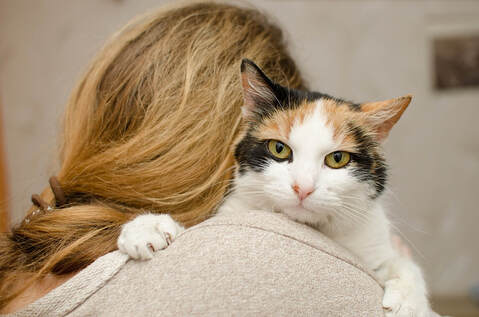

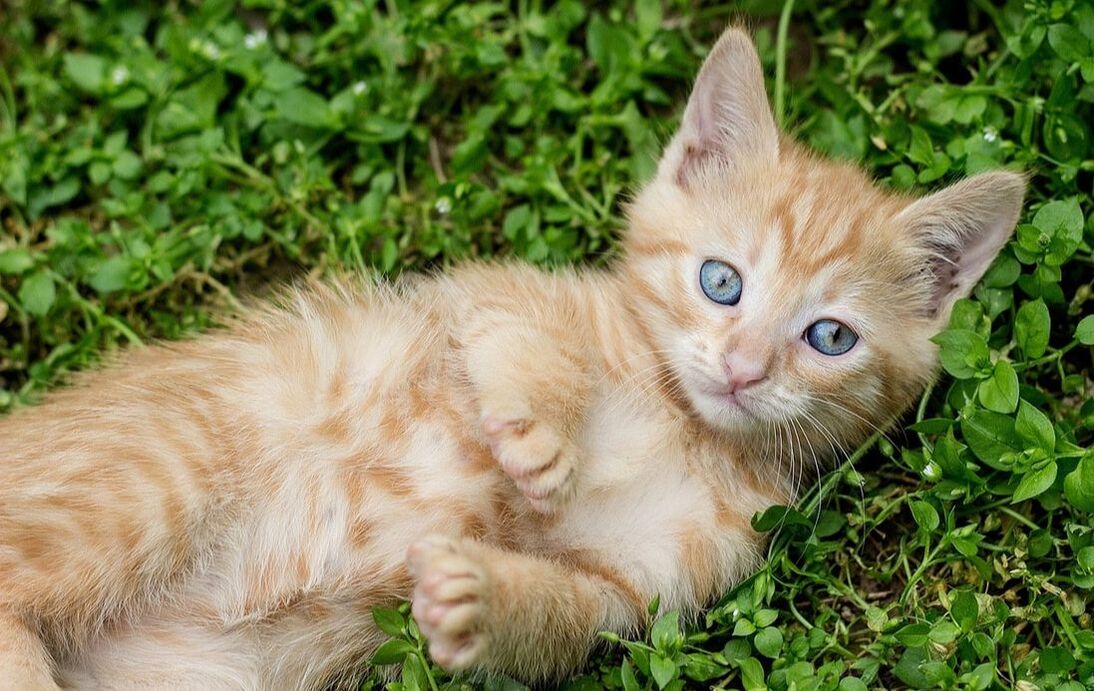
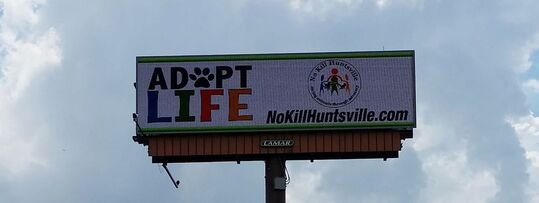


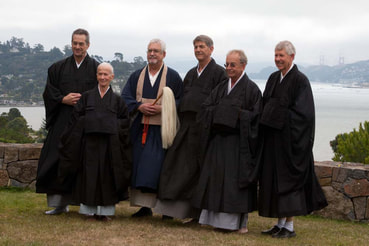
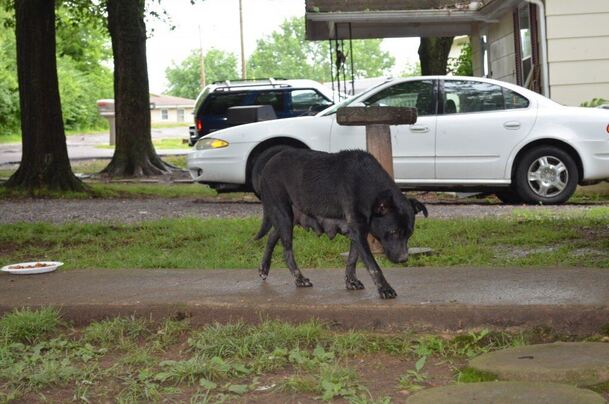

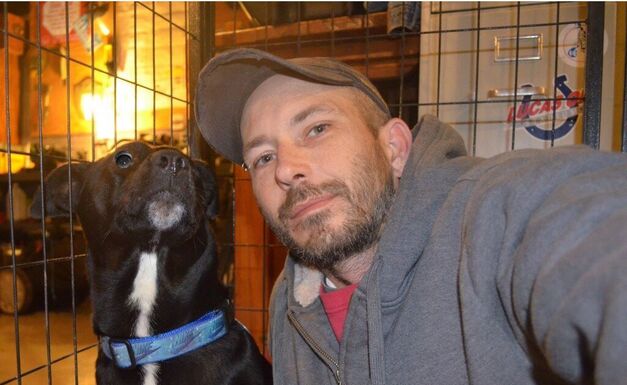
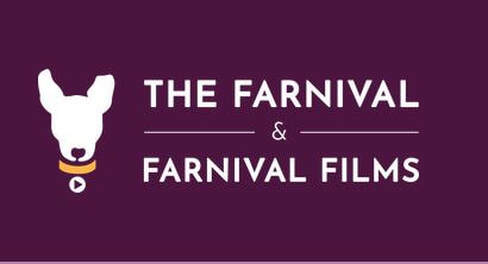

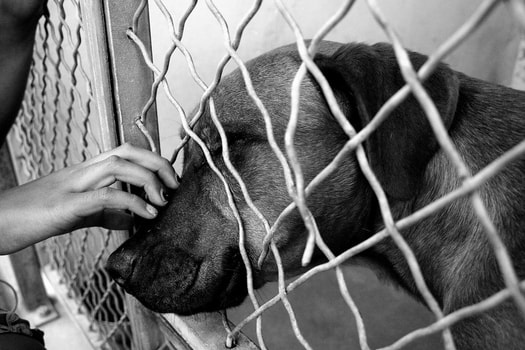
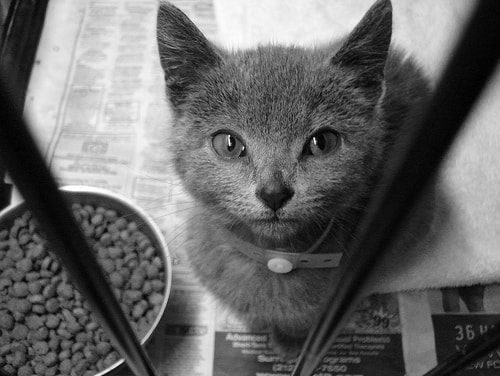
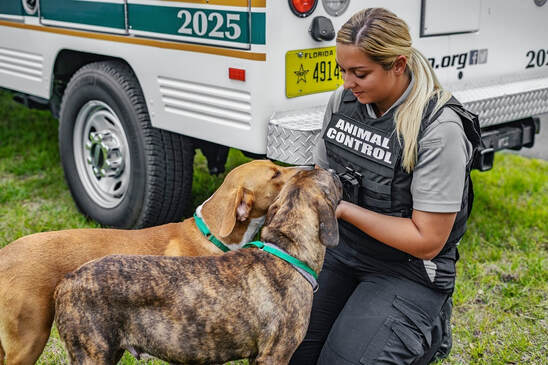


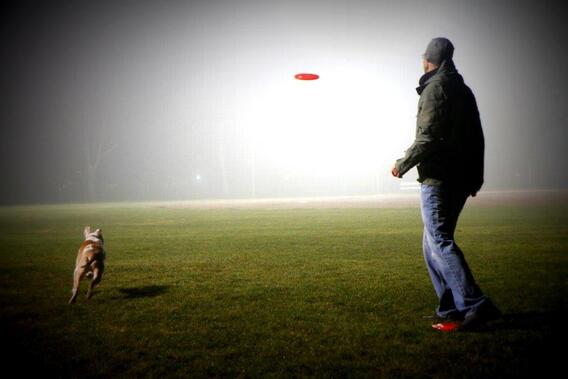
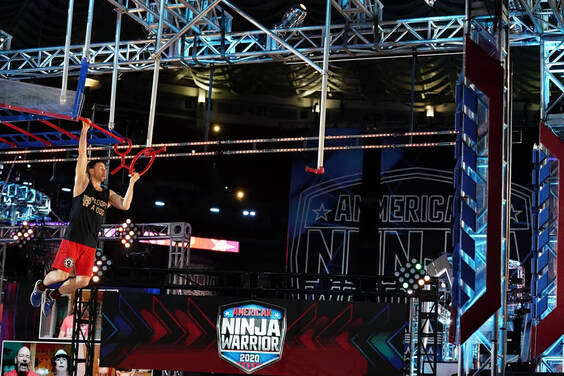
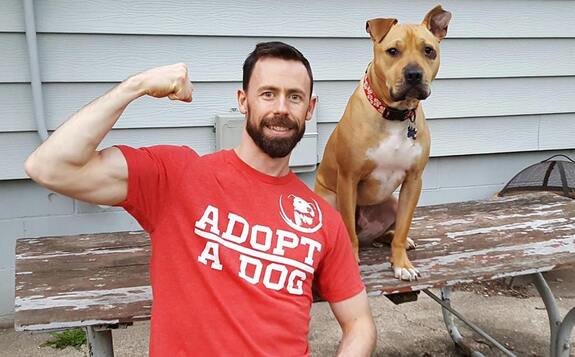
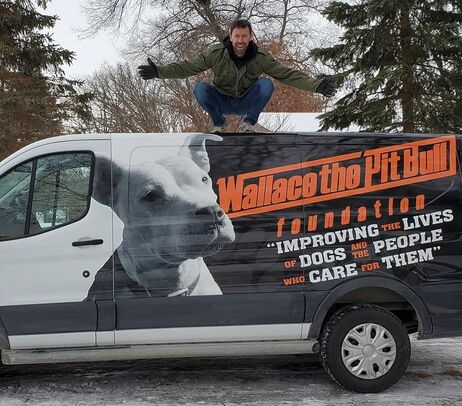
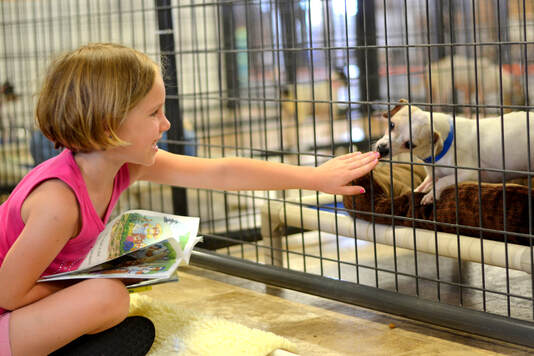
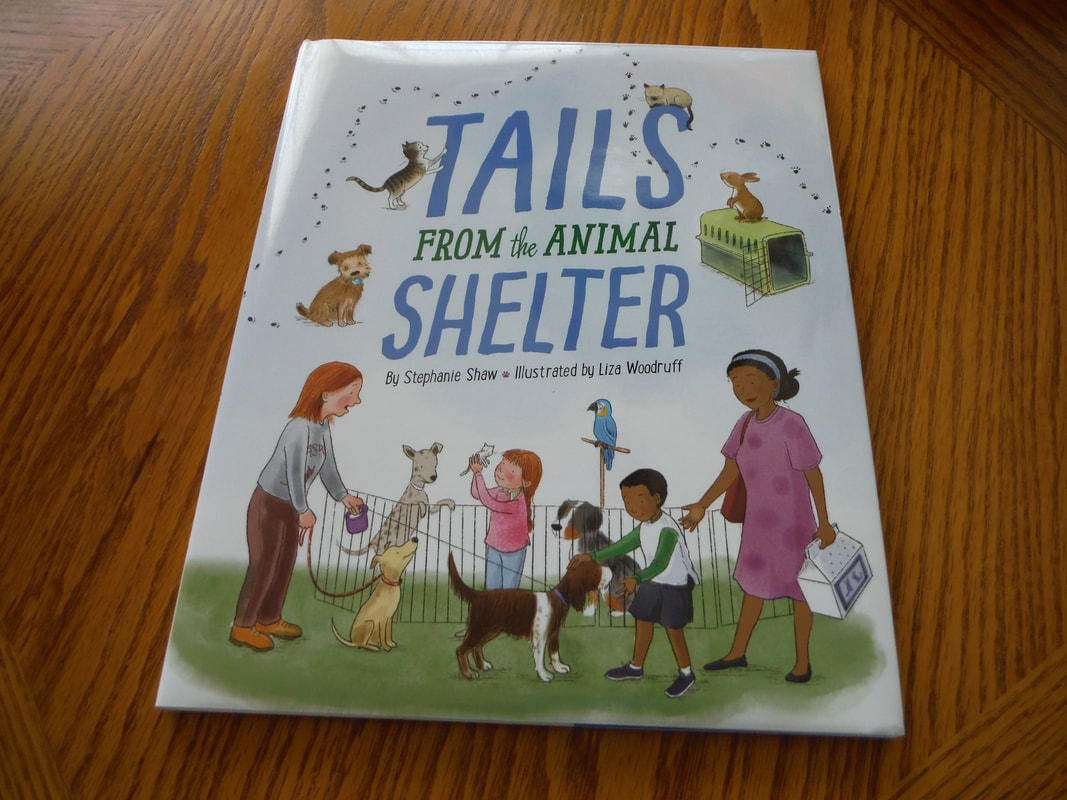
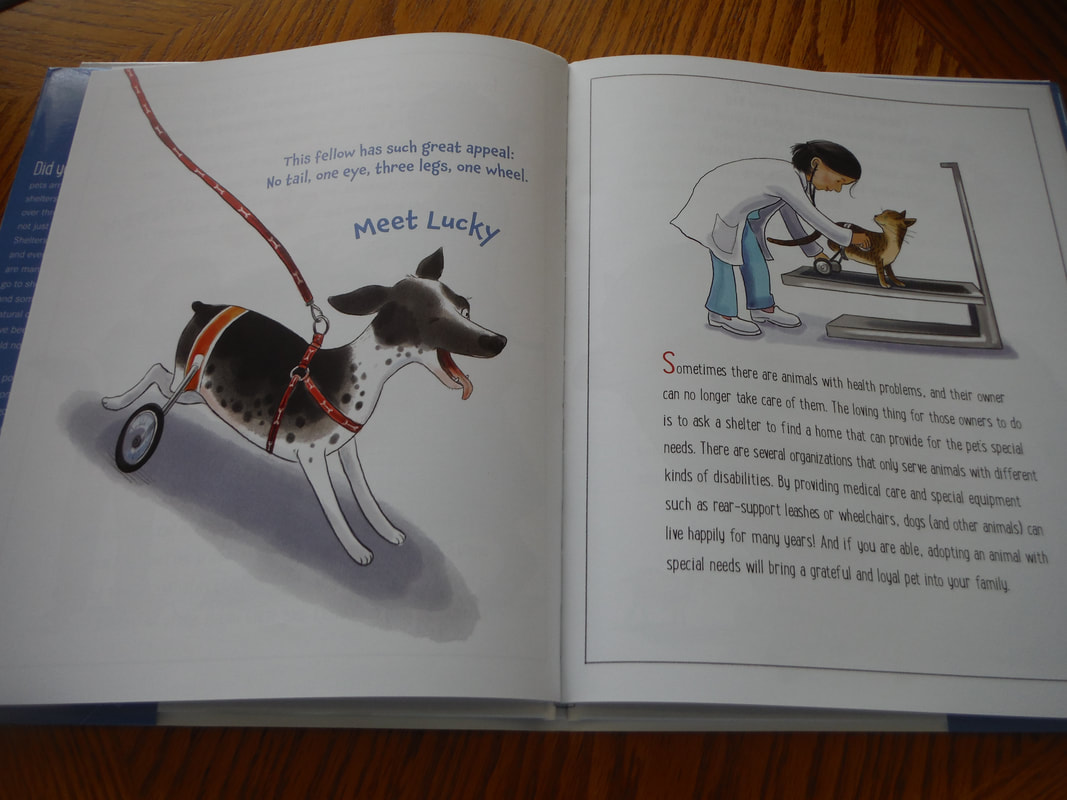




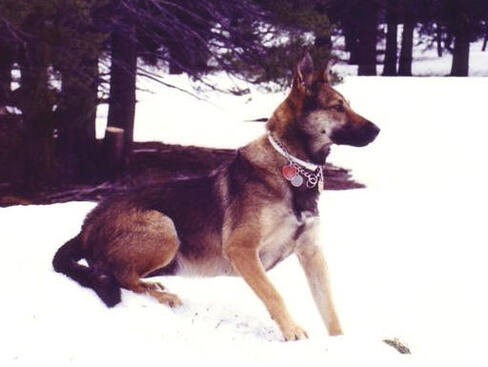
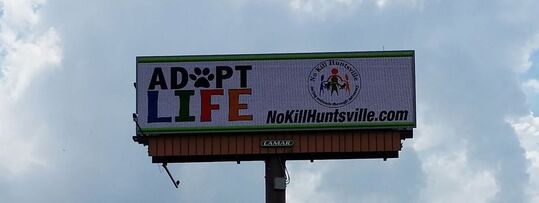
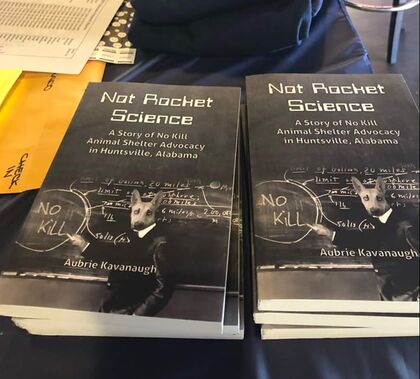
 RSS Feed
RSS Feed